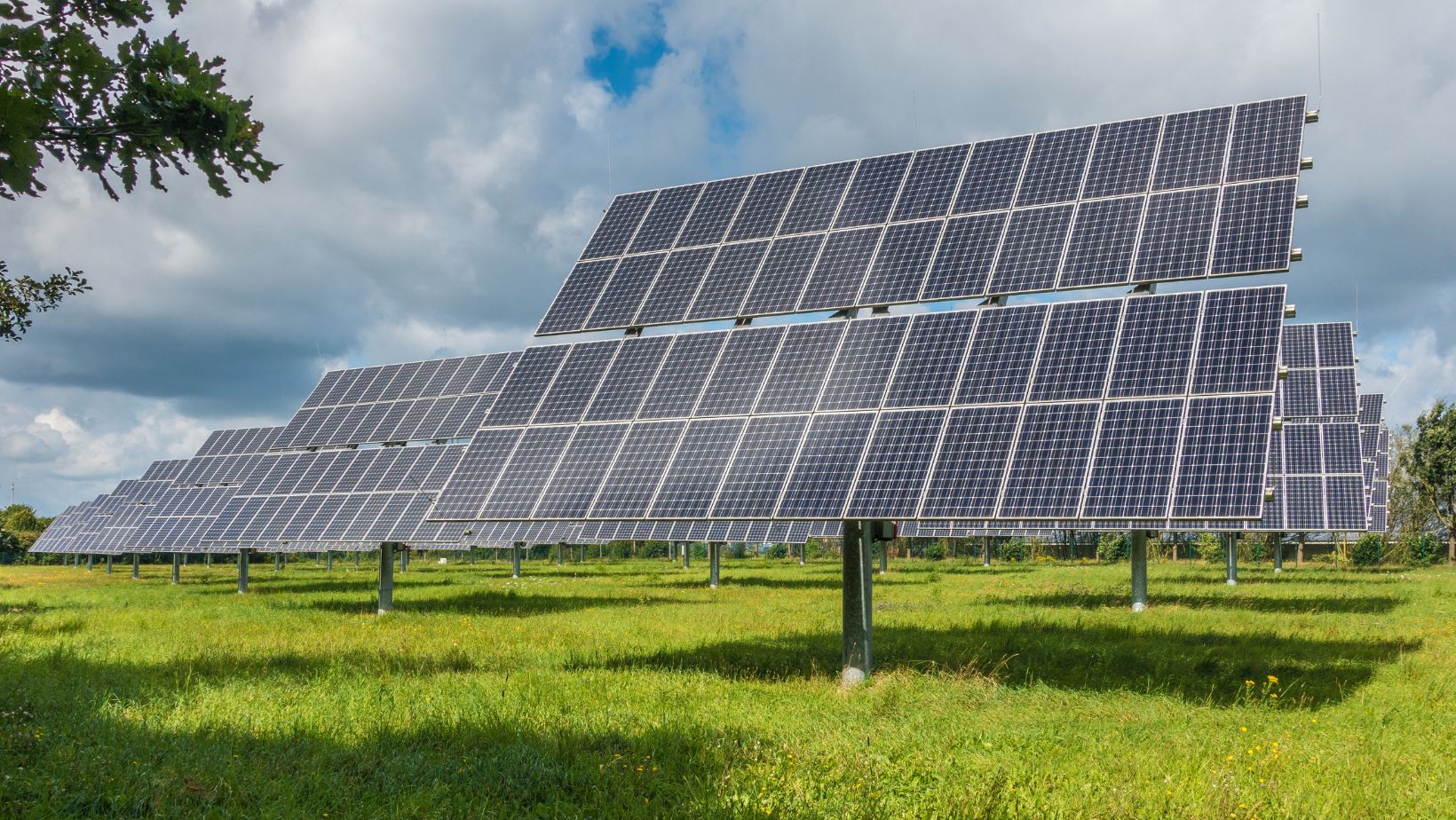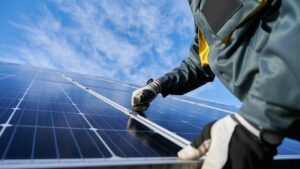
Key Takeaways
- Understanding the cost of solar panels per square foot
As the demand for renewable energy surges, more homeowners are considering solar panels as a viable option for reducing energy costs. Understanding the cost of solar panels per square foot is crucial for anyone looking to invest in this sustainable technology. This metric not only impacts the overall budget but also influences the return on investment over time.
Solar panel prices can vary significantly based on factors like type, installation, and location. By breaking down the costs per square foot, potential buyers can make informed decisions that align with their financial goals. With solar energy becoming increasingly accessible, now’s the perfect time to explore how it can benefit both the environment and your wallet.
Cost of Solar Panels Per Square Foot
Understanding the cost of solar panels involves analyzing several key factors that influence pricing. Costs can vary significantly based on specific circumstances surrounding the installation and type of panels chosen.
Factors Influencing Cost
- Type of Solar Panel: Different types of solar panels, such as monocrystalline, polycrystalline, and thin-film, come with varying costs. Monocrystalline panels tend to be the most efficient but also the most expensive.
- Installation Costs: Labor prices differ based on local wage rates and the complexity of installation. Specialized installations, such as roof-integrated systems, may increase overall costs.
- Location: Geographic location impacts solar panel costs due to variations in local incentives, property taxes, and utility rates. Areas with high electricity rates may yield a faster return on investment.
- System Size: The overall size of the solar panel system directly correlates with the total cost. Larger systems often provide economies of scale, lowering the cost per square foot.
- Incentives and Rebates: Federal, state, and local incentives can significantly reduce the initial investment. Understanding available tax credits and rebates is essential for potential savings.
Average Cost Per Square Foot
The average cost of solar panels typically ranges from $2.50 to $3.50 per square foot. These prices depend on the specific type and brand of solar panels used.
| Type of Solar Panel | Average Cost Per Square Foot |
|---|---|
| Monocrystalline | $3.00 – $4.00 |
| Polycrystalline | $2.50 – $3.50 |
| Thin-Film | $1.50 – $3.00 |
Factors such as system size and installation complexities can adjust these averages. Buyers can expect total installation costs to include equipment and labor, leading to a final price that might range from $15,000 to $30,000 for a typical home installation. Understanding these costs aids in calculating the total investment and expected returns from solar energy.
Comparison of Different Solar Panel Types
Understanding the different types of solar panels is essential for evaluating their costs and benefits. Each type offers unique characteristics that influence both performance and pricing.
Monocrystalline Panels
Monocrystalline panels feature a single crystal structure, increasing their efficiency and longevity. Efficiency ratings typically range from 15% to 22%, making them the most efficient type on the market. The cost per square foot generally falls between $3.00 and $4.00. While the initial investment is higher, the long-term performance often justifies the expense, as they produce more power in limited space.
Polycrystalline Panels
Polycrystalline panels are composed of multiple crystal structures and provide a lower efficiency compared to monocrystalline panels. Efficiency ranges from 13% to 16%, and costs are usually between $2.50 and $3.50 per square foot. These panels tend to be less expensive to produce, making them a popular choice for those seeking a more budget-friendly option while still providing reasonable efficiency.
Thin-Film Panels
Thin-film panels are made from layers of photovoltaic materials, offering lightweight and flexible applications. Their efficiency is typically lower, ranging from 10% to 12%, but they excel in specific environmental conditions, like high temperatures and low light. The cost per square foot generally ranges from $1.50 to $3.00, positioning them as a cost-effective choice, particularly for large-scale installations where space isn’t a concern.
Installation Costs
Installation costs encompass various elements of solar panel deployment, significantly impacting the overall investment. Understanding these expenses helps homeowners gauge the total financial commitment involved in installing solar systems.
Labor Costs
 Labor costs represent a substantial portion of the installation expense, typically ranging from $1.50 to $3.00 per watt. Costs vary based on installation complexity, local labor rates, and the experience of the installation team. Typical installations might demand specialized skills for roof work or electrical connections. A system requiring intricate roof structures or multiple panels may incur higher labor costs than a straightforward installation. Assessing local contractor pricing can help homeowners obtain accurate estimates.
Labor costs represent a substantial portion of the installation expense, typically ranging from $1.50 to $3.00 per watt. Costs vary based on installation complexity, local labor rates, and the experience of the installation team. Typical installations might demand specialized skills for roof work or electrical connections. A system requiring intricate roof structures or multiple panels may incur higher labor costs than a straightforward installation. Assessing local contractor pricing can help homeowners obtain accurate estimates.
Additional Equipment
Additional equipment costs also contribute to overall installation expenses. Components such as inverters, mounting systems, and wiring need consideration for total budgeting. Inverters convert solar energy into usable electricity and can cost between $1,000 and $2,500. Mounting systems, essential for securing panels to roofs or ground structures, generally range from $0.50 to $1.50 per watt. Wiring and other materials can add another $500 to $1,000 to the installation costs. Homeowners should calculate these expenses comprehensively to ensure an accurate estimation of the total investment in solar energy solutions.
Financial Incentives
Financial incentives play a crucial role in reducing the overall cost of solar panel installations. These incentives can include federal tax credits, state programs, and local rebates.
Federal Tax Credits
The federal government offers a tax credit of 30% of the total cost of solar panel systems. This credit applies to both residential and commercial installations, significantly lowering upfront expenses. Homeowners can claim this credit when filing federal taxes, which provides substantial relief on annual tax liabilities. For example, a $20,000 solar system could yield a tax credit of $6,000, enhancing the financial return on investment.
State and Local Incentives
State programs and local rebates also contribute to the affordability of solar panels. Various states provide additional tax credits, performance-based incentives, and rebates for solar installations. For instance, California offers a Solar Initiative program that provides rebates based on the size and performance of the solar system. Local utility companies may offer further incentives, such as discounted rates or cashback programs, which can complement state incentives. Knowing these options can maximize savings and encourage more homeowners to adopt solar energy.
Long-Term Savings
Long-term savings from solar panels manifest through reduced energy bills and federal incentives. Homeowners recognize the financial benefits of investing in solar energy, which can lead to substantial returns over time.
Return on Investment
Return on investment (ROI) for solar panels is influenced by several factors, including installation costs, local electricity rates, and available incentives. Homeowners typically see a payback period of 6 to 10 years, depending on the installation price and the efficiency of the selected solar panel type. A well-designed solar system may achieve an ROI of 20% or more, equating to thousands of dollars saved over the system’s 25 to 30-year lifespan. Evaluating local utility rates is crucial, as higher rates amplify savings, making solar energy more financially attractive.
Energy Savings Over Time
Energy savings from solar panels accumulate significantly over the years. Homeowners can save between $20,000 and $50,000 on energy costs during a typical system lifespan. Savings are contingent upon energy consumption patterns and regional electricity prices. For instance, using solar generation to power an entire home may eliminate monthly electricity bills, maximizing savings. Additionally, with increasing energy rates, the value of solar energy continues to rise, enhancing long-term financial benefits as consumers avoid higher utility costs.
Investing in Solar Panels
Investing in solar panels offers substantial long-term benefits for homeowners. By understanding the cost per square foot and the various factors influencing these prices, individuals can make informed decisions. The potential for savings on energy bills combined with available financial incentives makes solar energy an attractive option.
As the demand for renewable energy continues to grow, the financial advantages of solar installations become increasingly apparent. With careful planning and consideration of costs, homeowners can not only contribute to a sustainable future but also enjoy significant returns on their investment over time.
